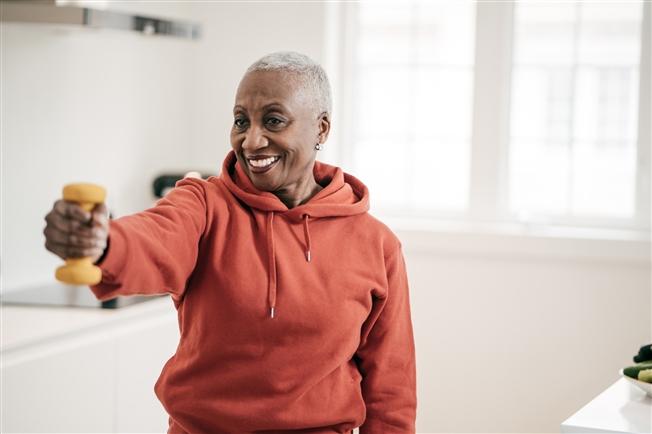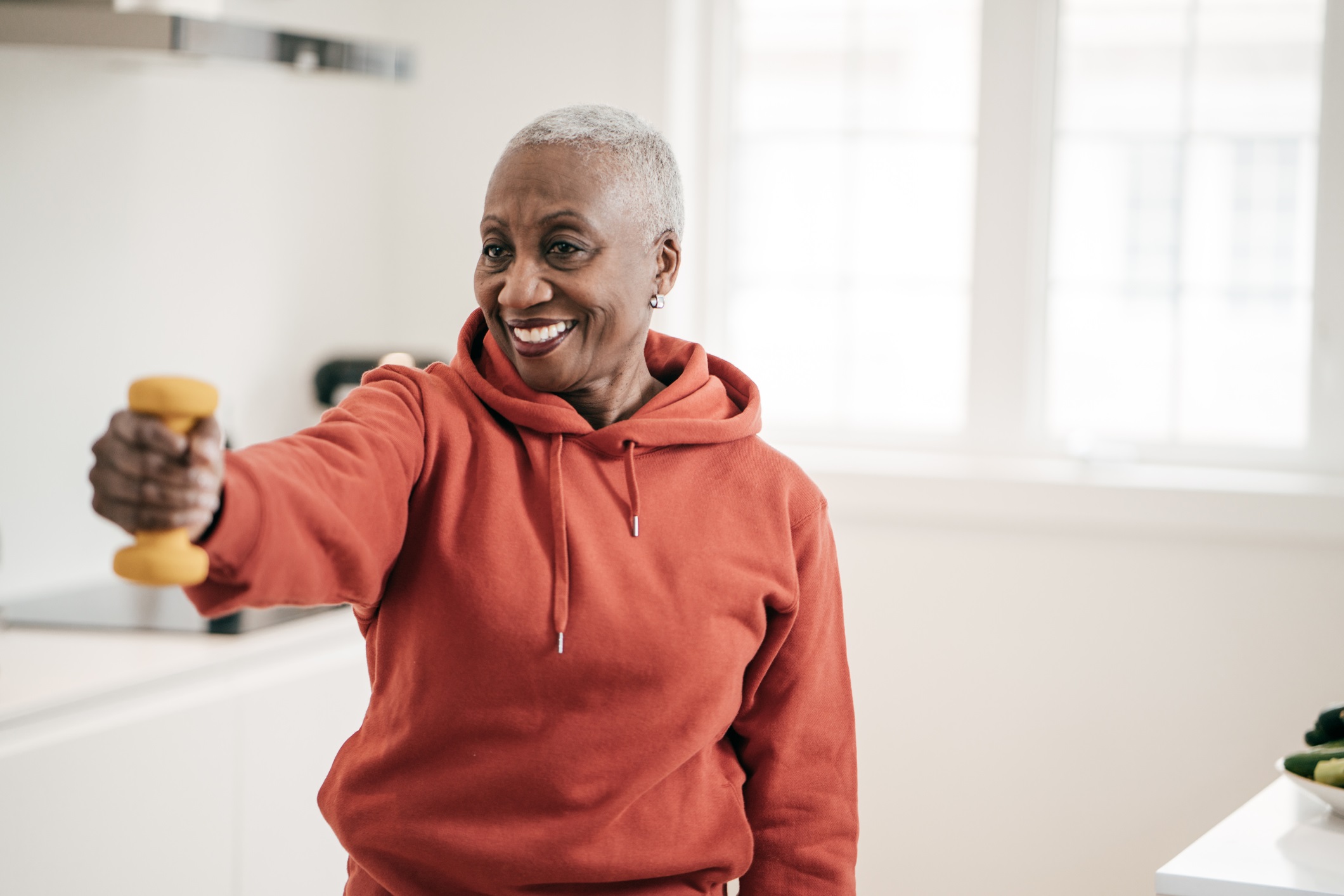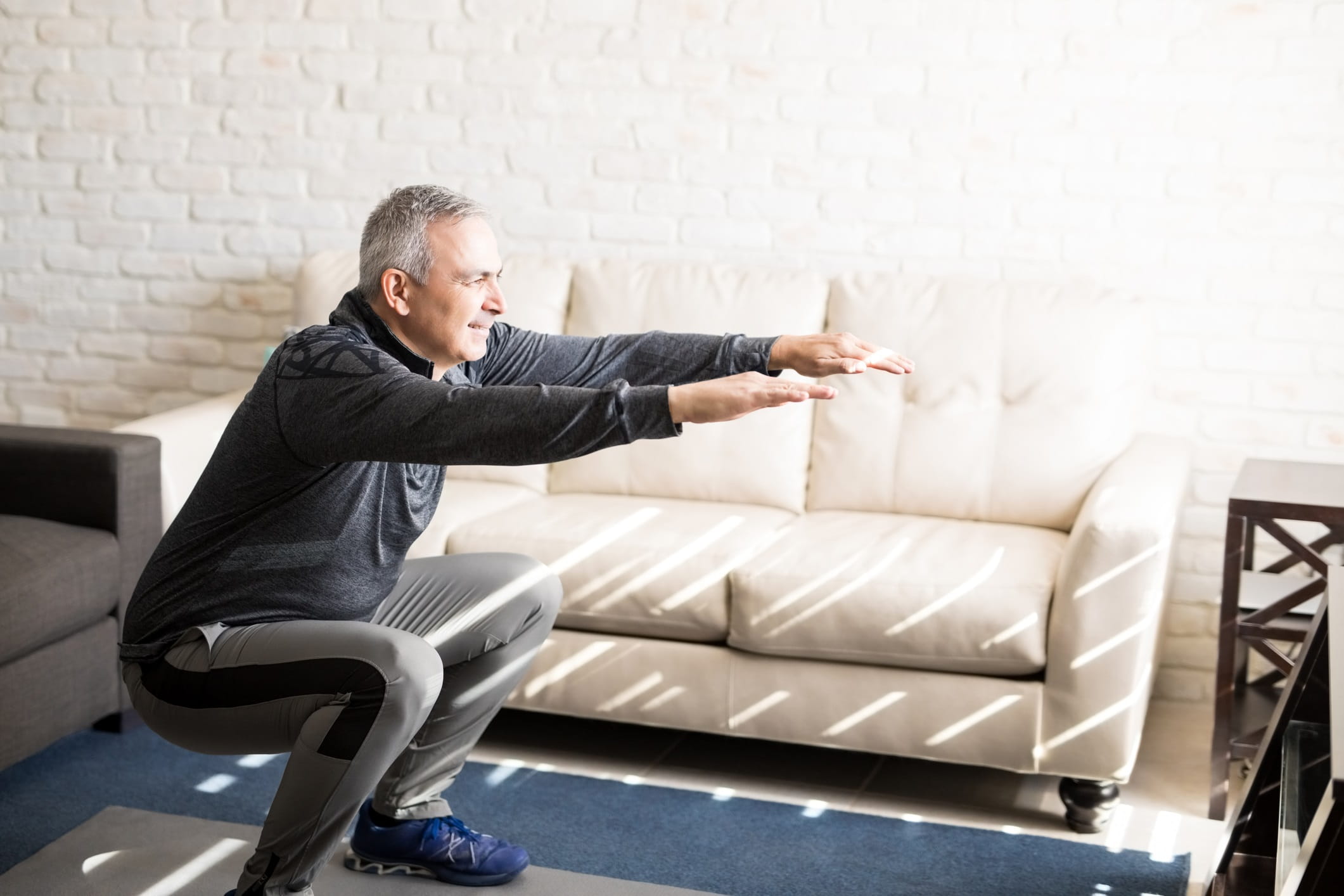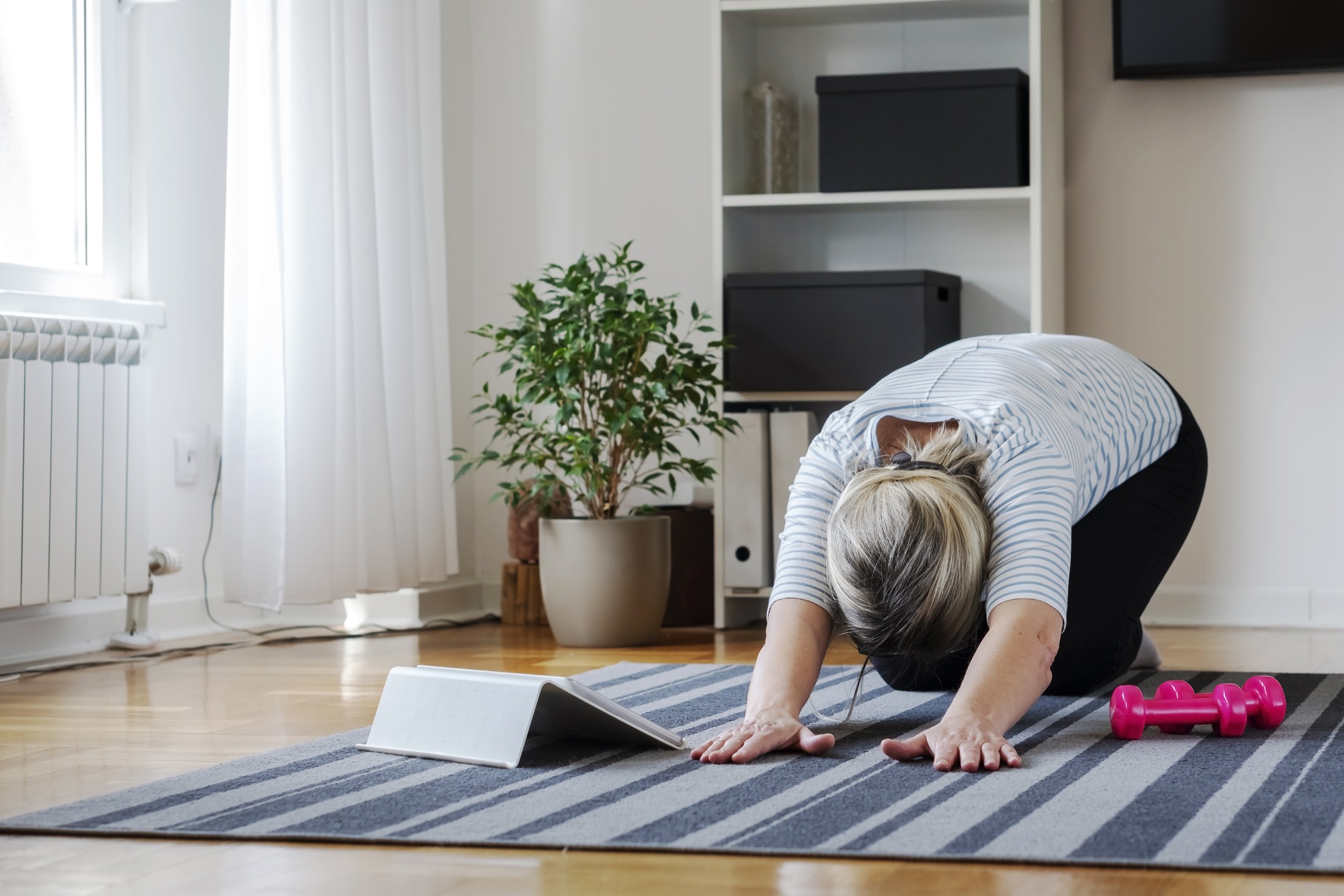Three easy types of exercises for seniors to do at home

It's easy for anyone to fall into a sedentary lifestyle, but the risk is especially great for seniors.
"Some seniors may have previously relied on the support of trainers or physical therapists to guide them through a routine safely. For others, scheduling disruptions and long periods of time without a routine could impact an older person's motivation to keep moving," explains Deb Bosley, PT, GCS, CEEAA, at Bryn Mawr Rehab Hospital, part of Main Line Health.
But it doesn’t have to be that way. Bosley offers some advice about easy types of exercises for seniors who want to stay active.

1. Walk indoors
When you're not able to get outside for a walk because of foul weather or for safety reasons, that doesn’t mean you can’t go for a walk inside. There are several walking-in-place programs available online, so pull one up on your tablet or computer and follow along. Your cable provider may even offer a library of walking workouts on your TV.
Of course, you don’t need a program to help you walk.
If you live in an apartment complex or residential facility, take several laps through nearby hallways. At home, you might consider walking in place to the beat of music, or even doing a few laps inside. You can climb the stairs, too—just make sure to hold on to the hand rail for balance.
Keep track of your minutes and try to increase slowly over time– even if you are only starting at five to ten minutes. That's a great start!
2. Strength training to improve balance and bone health
Strength training can reduce the risk of complications from a variety of chronic health issues like arthritis, diabetes and osteoporosis, all common issues associated with aging.

It can also help prevent age-related muscle loss, keep your bones strong, improve balance and prevent falls—a significant health risk for adults 65 and over. Some common strength training exercises you can start with include:
- Bicep curls: Start with a light weight (a water bottle or a can of soup) in each hand. Your elbows should be at your sides, with your forearms extended in front of your body. Keep your knees slightly bent and belly pulled in toward your spine. Slowly bring the weight up towards your shoulders by bending your elbow, then lower back to your starting position.
- Shoulder press: Stand with your feet hip-width distance apart. With a light weight in each hand, bring your arms at a 90-degree angle on the sides of your head. (You should look like you’re making a goal post gesture.) Alternate lifting your arms up over your head to straighten them, then slowly lower back to the starting position.
- Mini-squats: Hold onto a sturdy object, like a heavier chair, table or counter, for balance. Flex your knees and hips as though you are preparing to sit down. When your body reaches a 45-degree angle or you have moved as far as you are comfortable, push through your heels and slowly return to standing straight.
- Standing heel raises: Steadying yourself by holding on to an object for balance, raise up on to your toes and slowly lower yourself back down in a controlled manner.
- Sitting to standing: Starting seated in a chair that is braced against the wall, cross your arms in an ‘X’ over your chest. Stand up with your arms in this position. If you are unable to get up without using your hands, try elevating the seat with a pillow, or using one or two hands to assist.
“An important thing to remember if you’re going to try strength training is that it is not about how heavy you can lift or how quickly you can move,” Bosley reminds us. “It’s about moving your body slowly and safely so as not to fatigue your body or hurt yourself. Think about the functional movements you need to do each day – reaching into a cabinet, getting out of the dining room chair or off the commode, putting away dishes. All these exercises are designed to facilitate better functional control and help you maintain independence.”
If you don’t have any hand weights, that’s okay! You can use your own body weight if you’re just beginning, or use cans or bottles from your pantry—whatever works for you. Using resistance bands are another way to add to your strengthening routine, but be aware that some types provide too much resistance
Chair yoga, for example, may be appropriate for adults over 65 who can’t get down on the floor or may not be able to stand for an extended period of time.
3. Yoga
Yoga is a great exercise to do at home, as there are many different ways that you can adapt your routine to meet your physical needs. Chair yoga, for example, may be appropriate for adults over 65 who can’t get down on the floor or may not be able to stand for an extended period of time.

Just like walking exercises, there are many yoga routines available online that you can use to guide you. Look for beginner or chair yoga routines to help you get started. Often, the only equipment these routines require is a yoga mat, but if you don’t have one, that’s okay. Wear socks for traction and try yoga exercises in a carpeted area to prevent slips and falls.
If you have osteoporosis, be sure you avoid twisting and excessive flexing of your spine. In cases like these, getting professional instruction first is important. Before any routine, talk to your health care provider.
If you’re ready to get started with these routines, that’s great! But remember to consult with your provider first, especially if you have a history of falls or osteoporosis. Exercise is important, but your personal health and safety should always come first.